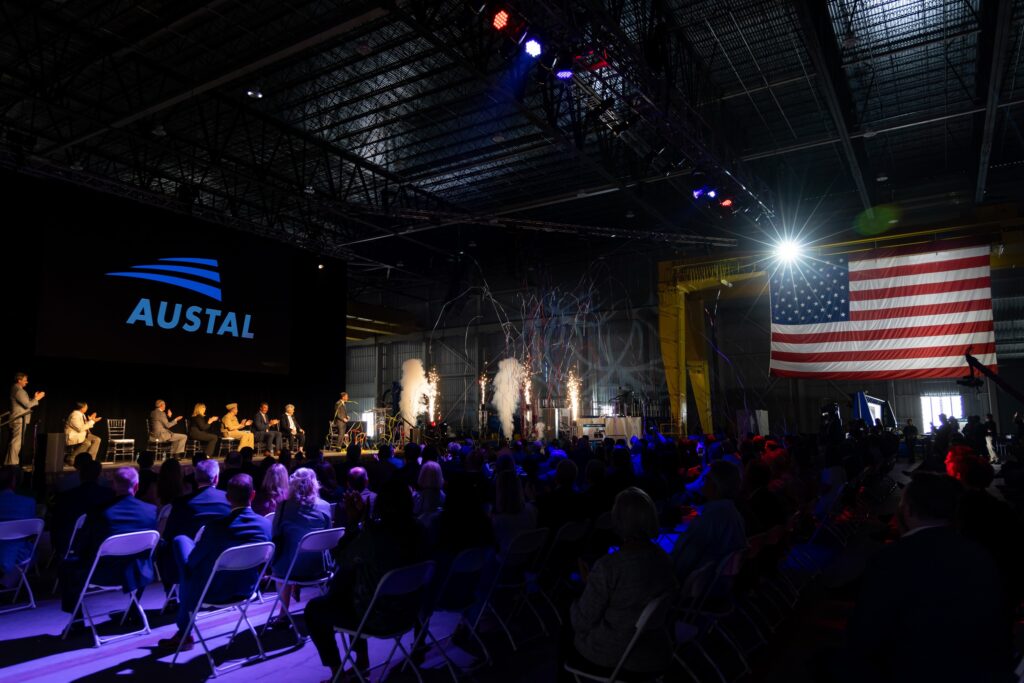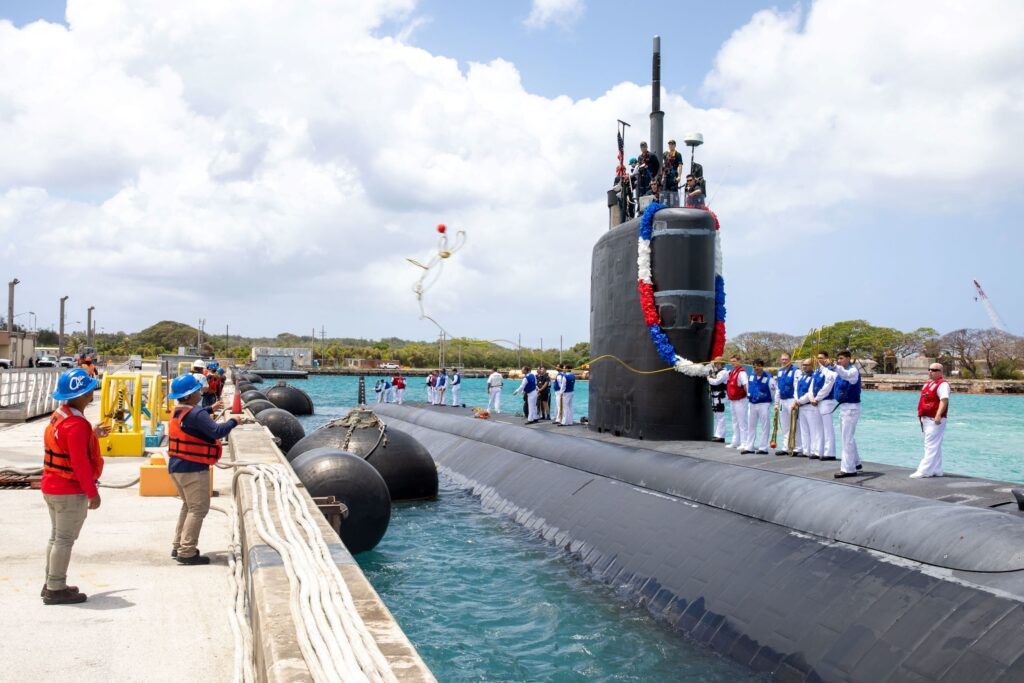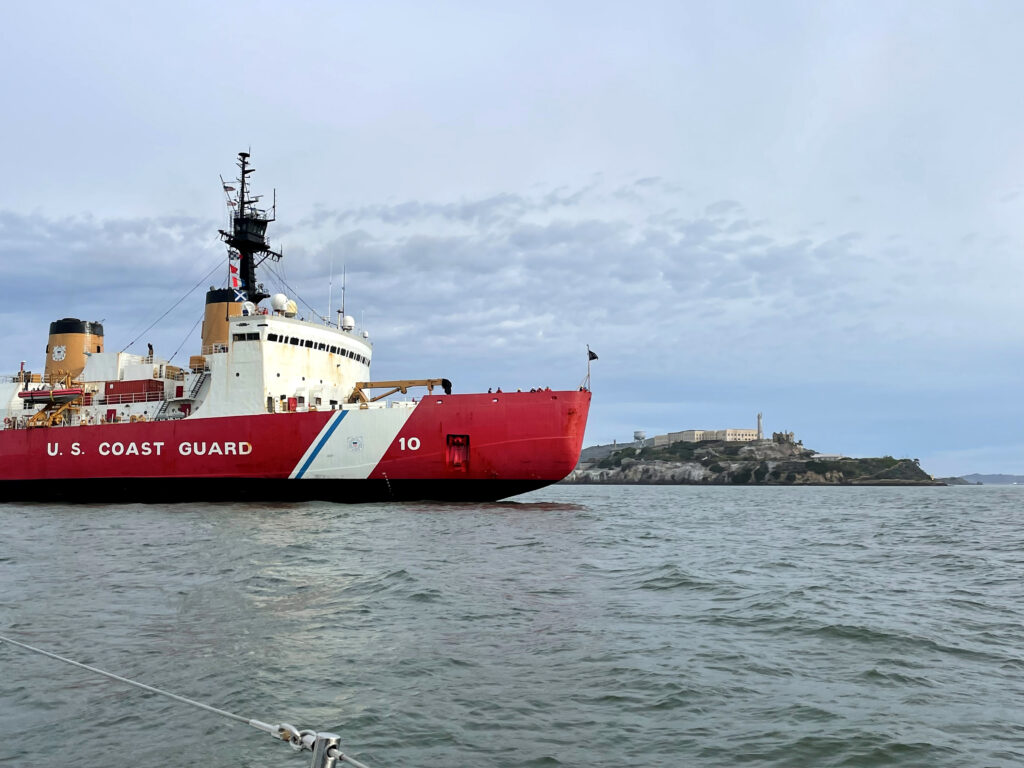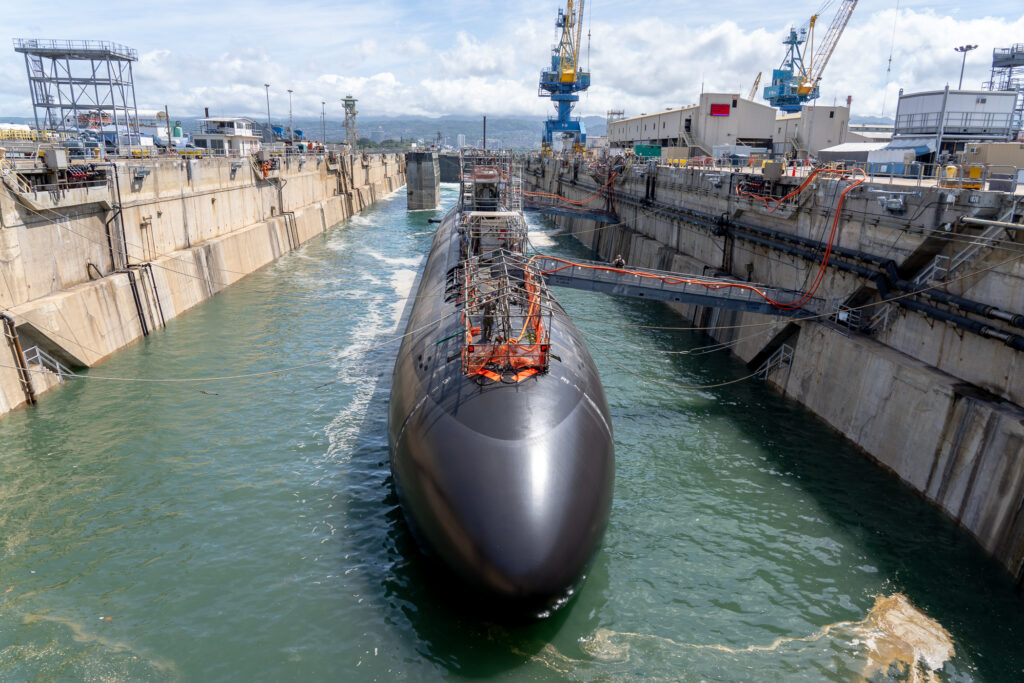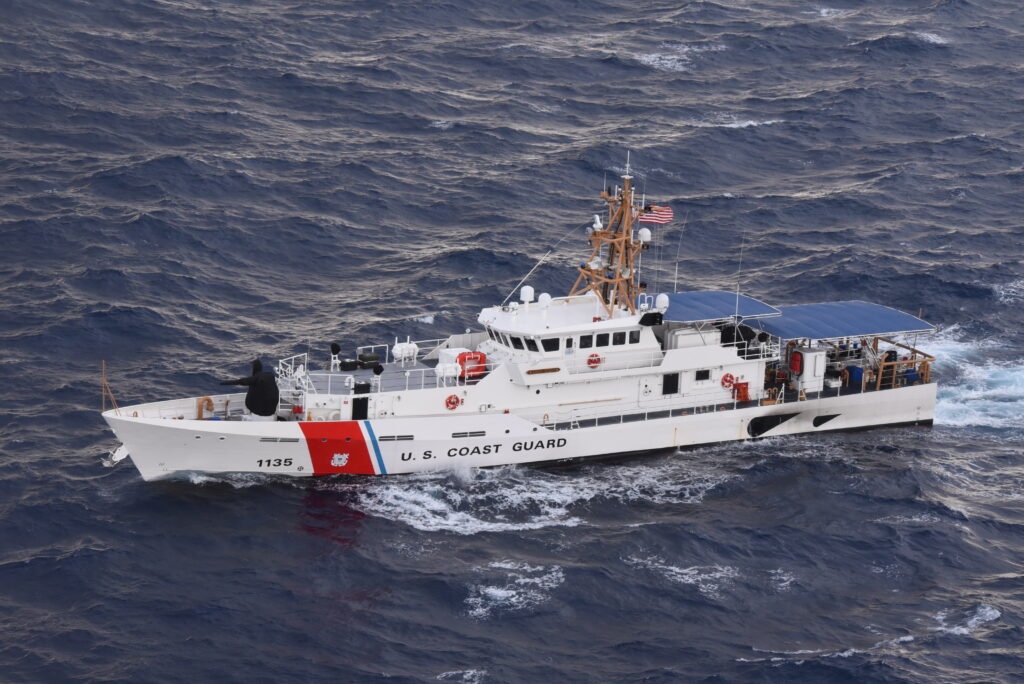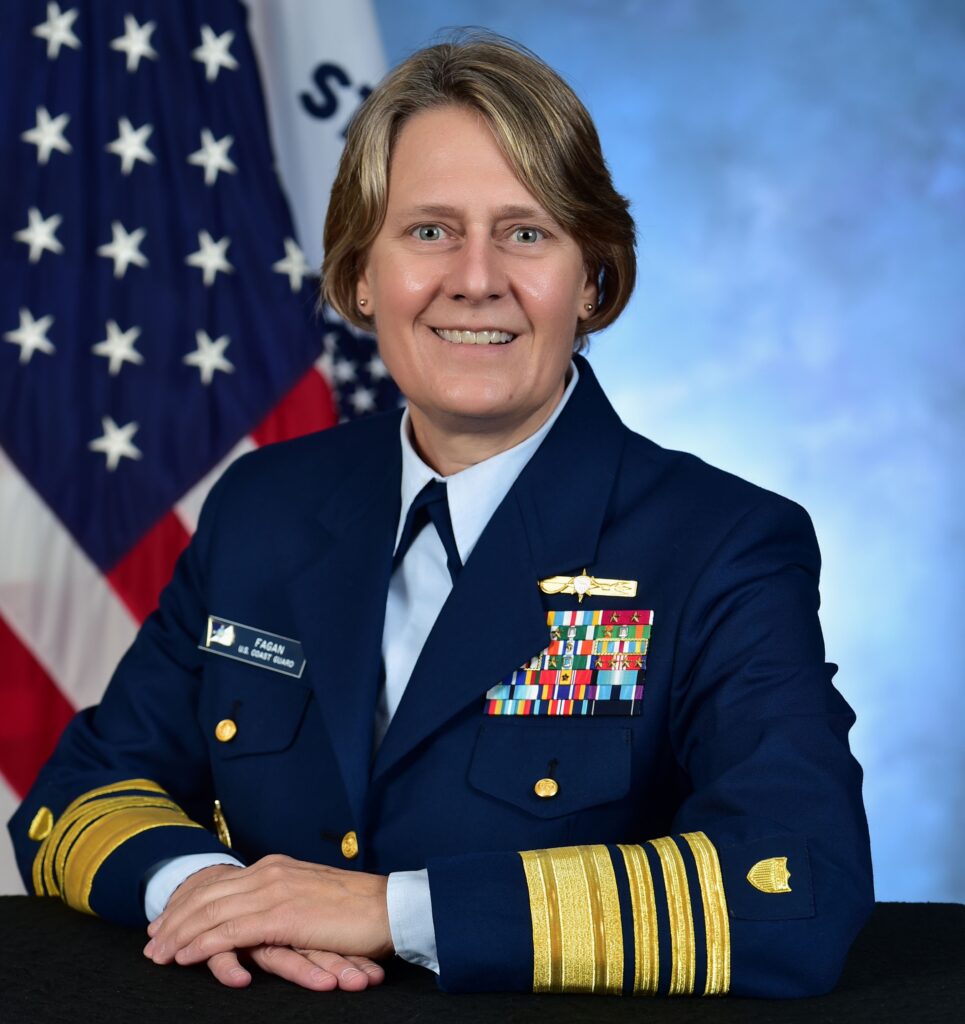ARLINGTON, Va. — Secretary of Defense Lloyd J. Austin III announced April 6 the president has made the following nomination:
Navy Vice Adm. Eugene D. Black III for reappointment to the grade of vice admiral, and assignment as deputy chief of naval operations for operations, plans, and strategy, N3/N5, Office of the Chief of Naval Operations, Washington, D.C. Black is currently serving as commander, Sixth Fleet; commander, Task Force Six; commander, Striking and Support Forces NATO; deputy commander, U.S. Naval Forces Europe; commander, U.S. Naval Forces Africa; and Joint Force Maritime Component Commander Europe, Naples, Italy.
The secretary of the Navy and chief of naval operations announced April 6 the following assignments:
Rear Adm. Daniel L. Cheever will be assigned as chief of staff, North American Aerospace Defense Command; and chief of staff, U.S. Northern Command, Colorado Springs, Colorado. Cheever is currently serving as director of plans, policy and strategy, North American Aerospace Defense Command; and director of plans, policy and strategy, U.S. Northern Command, Colorado Springs, Colorado.
Rear Adm. Paul J. Schlise will be assigned as director, Warfare Development, N72, Office of the Chief of Naval Operations, Washington, D.C. Schlise is currently serving as director, Surface Warfare Division, N96, Office of the Chief of Naval Operations, Washington, D.C.
Rear Adm. Douglas C. Verissimo will be assigned as director, Maritime Operations, U.S. Fleet Forces Command, Norfolk, Virginia. Verissimo is currently serving as director, Assessment Division, N81, Office of the Chief of Naval Operations, Washington, D.C.
Rear Adm. Dean A. VanderLey will be assigned as commander, Naval Facilities Engineering Systems Command; and chief of civil engineers, with additional duties as deputy commander for facilities and environment, Navy Installations Command; and deputy commander for facilities and environment, Marine Corps Installations Command, Washington, D.C. VanderLey is currently serving as commander, Naval Facilities Engineering Command Pacific; and director, Fleet Civil Engineer, U.S. Pacific Fleet, with additional duty as fleet civil engineer, N46, U.S. Pacific Fleet, Pearl Harbor, Hawaii.
Rear Adm. Peter G. Vasely will be assigned as deputy director for joint training, J-7, Joint Staff, Suffolk, Virginia. Vasely is currently serving as special assistant to director, Navy Staff, Norfolk, Virginia.
Rear Adm. John F. Wade will be assigned as deputy commander, U.S. Pacific Fleet, Pearl Harbor, Hawaii. Wade is currently serving as director of operations, J-3, U.S. Indo-Pacific Command, Camp H.M. Smith, Hawaii.
Rear Adm. (lower half) Jeffrey T. Anderson, selected for promotion to rear admiral, will be assigned as director of operations, J-3, U.S. Indo-Pacific Command, Camp H.M. Smith, Hawaii. Anderson is currently serving as commander, Carrier Strike Group Three, Bremerton, Washington.
Rear Adm. (lower half) Matthew J. Burns will be assigned as commander, Special Reconnaissance and Enabling Command, U.S. Special Operations Command, MacDill Air Force Base, Florida. Burns is currently serving as assistant commander-operations, Joint Special Operations Command, U.S. Special Operations Command, Fort Bragg, North Carolina.
Rear Adm. (lower half) Thomas M. Henderschedt will be assigned as director, J2, U.S. Indo-Pacific Command, Camp H.M. Smith, Hawaii. Henderschedt is currently serving as senior defense official and Defense Attaché – China, Beijing, China.
Rear Adm. (lower half) Lawrence F. LeGree will be assigned as deputy commander, Joint Interagency Task Force-South, U.S. Southern Command, Key West, Florida. LeGree is currently serving as assistant chief of staff (J-3), Joint Forces Command, Naples, Naples, Italy.
Rear Adm. (lower half) William P. Pennington, selected for promotion to rear admiral, will be assigned as chief of staff, U.S. Space Command, Peterson Air Force Base, Colorado. Pennington is currently serving as deputy commander, Tenth Fleet, Fort George G. Meade, Maryland.
Rear Adm. (lower half) Philip E. Sobeck will be assigned as director, Strategic Plans, Policy, Logistics, J-5/4, U.S. Transportation Command, Scott Air Force Base, Illinois. Sobeck is currently serving as commander, Logistics Group, Western Pacific; and commander, Task Force Seven Three, Singapore.
Capt. George E. Bresnihan, selected for promotion to rear admiral (lower half), will be assigned as director, Logistics Directorate, J-4, U.S. Africa Command, Stuttgart, Germany. Bresnihan is currently serving as chief of staff, Naval Supply Systems Command, Mechanicsburg, Pennsylvania.
Capt. Matthew Case, selected for promotion to rear admiral (lower half), will be assigned as commander, Naval Medical Forces Atlantic, with additional duties as director, Tidewater Market; and chief of the Medical Service Corps, Portsmouth, Virginia. Case is currently serving as executive assistant to the surgeon general of the Navy, Washington, D.C.
Capt. Carey H. Cash, selected for promotion to rear admiral (lower half), will be assigned as chaplain of the Marine Corps; and deputy chief of chaplains of the Navy, N097B, Office of the Chief of Naval Operations, Washington, D.C. Cash is currently serving as commanding officer, Naval Chaplaincy School and Center, Newport, Rhode Island.
Capt. Adan G. Cruz, selected for promotion to rear admiral (lower half), will be assigned as deputy director, Political-Military Affairs (Middle East), J-5, Joint Staff, Washington, D.C. Cruz is currently serving as deputy, Combat Systems and Integration, N96, Office of the Chief of Naval Operations, Washington, D.C.
Capt. John E. Dougherty IV, selected for promotion to rear admiral (lower half), will be assigned as commander, Naval Air Warfare Center, Aircraft Division; and assistant commander for research and engineering, Naval Air Systems Command (AIR-4.0). Dougherty is currently serving as major program manager, Program Executive Office for Tactical Aircraft Programs, Patuxent River, Maryland.
Capt. Keith A. Hash, selected for promotion to rear admiral (lower half), will be assigned as commander, Naval Air Warfare Center, Weapons Division; and assistant commander for Test and Evaluation, Naval Air Systems Command (AIR-5.0), Patuxent River, Maryland. Hash is currently serving as program manager for air warfare, PMA-298, Naval Air Systems Command, Patuxent River, Maryland.
Capt. Tracy L. Hines, selected for promotion to rear admiral (lower half), will be assigned as Navy Cyber Security Division director, Office of the Chief of Naval Operations, Washington, D.C. Hines is currently serving as executive assistant to the chief of naval operations, Office of the Chief of Naval Operations, Washington, D.C.
Capt. Stephen J. Jackson, selected for promotion to rear admiral (lower half), will be assigned as deputy director, Operations, and Integration Directorate, Defense Threat Reduction Agency, Fort Belvoir, Virginia. Jackson is currently serving as Navy programs and policy director, Expeditionary Combat Branch Head, Office of the Chief of Naval Operations, Washington, D.C.
Capt. Jeffrey J. Kilian, selected for promotion to rear admiral (lower half), will be assigned as commander, Naval Facilities Engineering Command Pacific; and director, Fleet Civil Engineer, U.S. Pacific Fleet, with additional duty as fleet civil engineer, N46, U.S. Pacific Fleet, Pearl Harbor, Hawaii. Kilian is currently serving as chief of staff, Naval Facilities Engineering Systems Command, Washington, D.C.
Capt. Ryan M. Perry, selected for promotion to rear admiral (lower half), will be assigned as Navy chief of information, Washington, D.C. Perry is currently serving as force public affairs officer, Naval Special Warfare Command, San Diego, California.
Capt. Mark B. Sucato, selected for promotion to rear admiral (lower half), will be assigned as commander, Navy Region Northwest, Silverdale, Washington. Sucato is currently serving as deputy director, Reserve Warfare Requirements and Capabilities, N9, Office of the Chief of Naval Operations, Washington, D.C.
Capt. Guido F. Valdes, selected for promotion to rear admiral (lower half), will be assigned as commander, Naval Medical Forces Pacific, with additional duties as director, San Diego Market; and chief of the Medical Corps, San Diego, California. Valdes is currently serving as deputy commander, Naval Medical Forces Atlantic, Portsmouth, Virginia.
